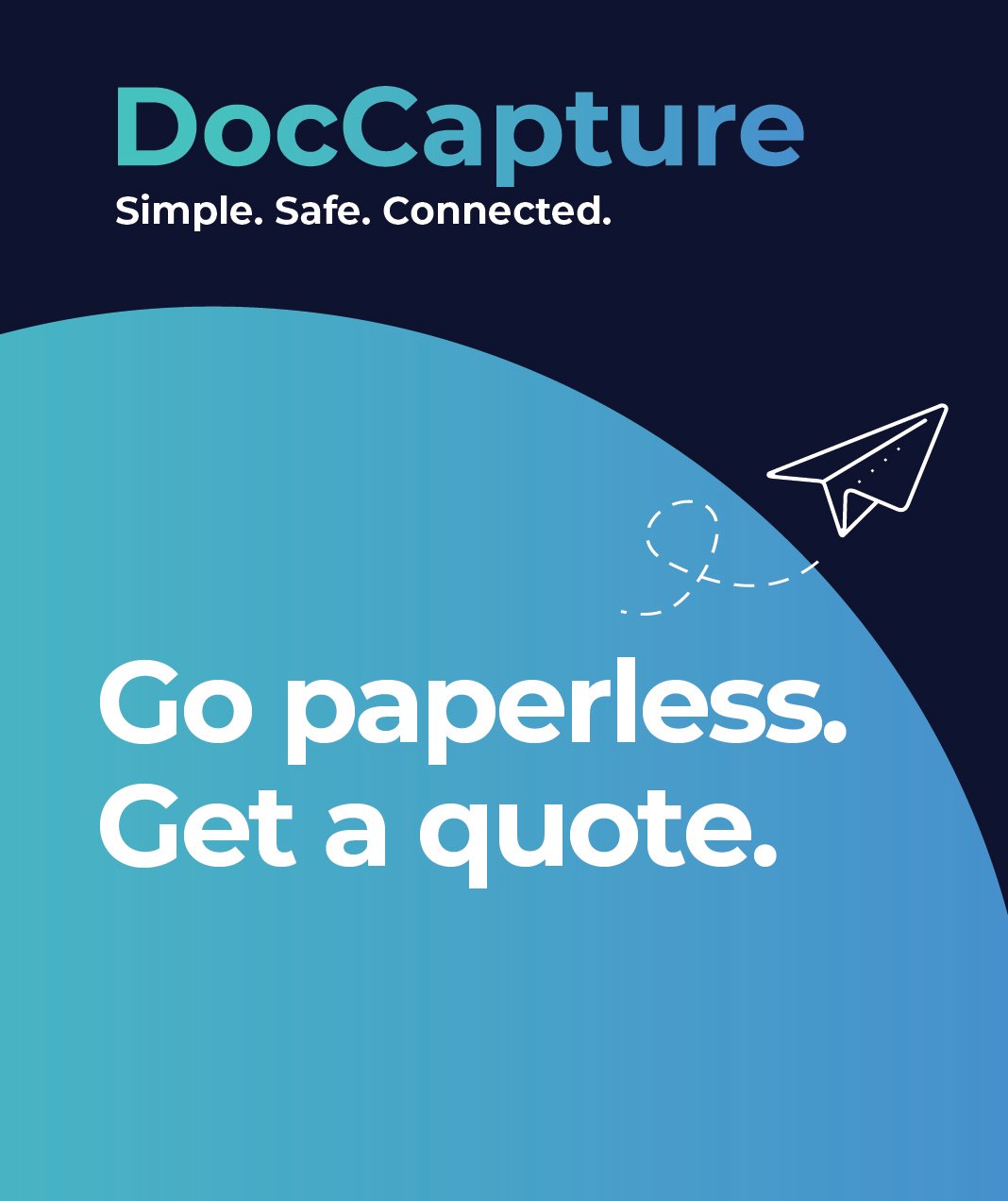Streamlining Claims Processing in Healthcare with Document Scanning
Table of contents
In the high-stakes world of healthcare, streamlining claims processing in healthcare is no longer optional—it’s essential. Delayed reimbursements, rejected claims, and human error can significantly impact both patient satisfaction and a provider's bottom line. For large healthcare organizations managing thousands of claims daily, manual processes are not only inefficient—they’re risky.
Healthcare executives and decision-makers such as CIOs, CMOs, and compliance officers are under immense pressure to balance operational efficiency with strict regulatory demands. Every misplaced document or overlooked claim detail increases the likelihood of audits, denials, and penalties. That’s why document scanning and digital transformation have become vital tools in the modern healthcare IT arsenal.
This article explores how transitioning from paper-based workflows to secure, digital systems not only eliminates bottlenecks but also ensures accuracy, compliance, and faster turnaround times in the claims lifecycle. We'll also show how solutions like DocCapture support this shift—without disrupting existing systems or compromising patient care.
The Claims Processing Challenge in Healthcare
Despite advancements in healthcare technology, many large organizations still rely on paper-based or partially digital systems to manage insurance claims. These outdated processes create a host of inefficiencies—slower turnaround times, increased manual errors, and difficulty tracking claims across departments. As a result, claims are more likely to be rejected, delayed, or returned for correction, impacting both cash flow and patient trust.
For compliance-driven roles like CIOs and Directors of Compliance, the stakes are high. Claims processing involves handling sensitive patient information, and even minor missteps can trigger HIPAA violations or audit findings. Furthermore, responding to claim rejections or appeals often requires fast, accurate access to patient records—a near-impossible task when those records are buried in filing cabinets or siloed systems.
Without a reliable way to digitize and organize these records, healthcare organizations remain vulnerable to bottlenecks and regulatory scrutiny. That’s why more providers are turning to medical document scanning and medical records scanning solutions to bring clarity and speed to an otherwise chaotic process.
How Document Scanning Transforms Claims Processing
Document scanning solutions serve as a pivotal step toward digital transformation in healthcare claims management. By converting physical records into high-quality digital files, healthcare organizations gain immediate access to the data needed to process claims accurately and efficiently. No more delays from misplaced paperwork or manual data entry errors—information becomes searchable, shareable, and securely stored.
With advanced indexing and OCR (optical character recognition) technologies, scanned medical records can be quickly matched to specific claims, patients, or service dates. This reduces the administrative burden on staff, eliminates redundant workflows, and ensures that each claim is submitted with complete, legible documentation the first time around.
The benefits extend well beyond initial processing. Scanned documents also enable faster responses to denials, rejections, and audits. When integrated into electronic medical record (EMR) systems, digital files streamline coordination between billing, compliance, and care teams—strengthening both operational integrity and patient outcomes. Learn more about how scanning medical records into EMR enhances claims workflows across departments.
Meeting Compliance and Turnaround Time Requirements
In today’s regulatory climate, compliance is non-negotiable. Healthcare organizations are under constant pressure to meet strict turnaround times for claims submissions, appeals, and audits—all while ensuring full adherence to HIPAA and other data privacy mandates. Any delays or documentation gaps can jeopardize reimbursements and open the door to penalties.
Document scanning supports compliance by creating a traceable, organized digital archive of patient information. Every scanned record is time-stamped, encrypted, and stored securely, reducing the risk of unauthorized access or data breaches. With clear audit trails and version control, compliance officers can quickly locate and verify documentation to satisfy payer or regulatory inquiries.
Furthermore, digitized workflows improve turnaround time by eliminating manual routing and physical document handling. Claims can be submitted faster, errors can be corrected more efficiently, and denied claims can be appealed with the right supporting evidence—often within required time windows.
For organizations facing recurring challenges with documentation-related delays or compliance risks, the shift to a digital-first model is a strategic necessity. DocCapture helps healthcare providers make that shift seamlessly while ensuring all scanning processes remain HIPAA-compliant.
Data Security and Integration with Existing Systems
For healthcare IT leaders, implementing new solutions often raises concerns about disrupting existing workflows or compromising sensitive data. Document scanning, when done right, addresses both of these challenges. Modern scanning solutions are designed with data security and system integration at their core, ensuring that digital transformation strengthens—rather than complicates—your infrastructure.
At DocCapture, all scanning services adhere to HIPAA standards, with encryption protocols and secure transfer methods that protect patient data throughout the digitization process. Whether handling current files or decades-old archives, every document is digitized and delivered with confidentiality, traceability, and regulatory compliance in mind.
Integration is equally seamless. Scanned medical records can be indexed and formatted to match your existing EMR or document management system, allowing teams to access what they need without switching platforms or learning new tools. Whether you're using an enterprise health information system or a custom-built solution, DocCapture ensures smooth handoffs and minimal IT disruption.
For more on how your organization can leverage this secure, interoperable process, explore our medical records scanning resource page.
Operational Benefits: Time, Cost, and Workforce Efficiency
The operational impact of digitizing healthcare claims processes goes far beyond compliance and accuracy. Document scanning drives measurable improvements in time savings, cost reduction, and workforce efficiency—three areas where large healthcare organizations often face mounting pressure.
Manually managing thousands of claims requires extensive administrative labor, physical storage space, and repetitive tasks like filing, retrieving, and copying documents. Digitization eliminates these bottlenecks. Staff can locate patient records in seconds rather than hours, enabling faster claims resolution and better responsiveness to insurers and auditors.
Digitized systems also reduce overhead costs associated with paper handling—such as printing, courier services, and storage. Over time, this translates into significant budget relief and better allocation of internal resources. Perhaps most importantly, freeing up administrative staff from manual processes allows them to focus on higher-value tasks that directly support care quality and patient outcomes.
Healthcare organizations ready to reclaim operational efficiency can begin with medical records scanning as a foundational step. It’s a strategic move that delivers lasting ROI through faster turnaround times, fewer denials, and a more agile workforce.
Why Now? The Cost of Inaction
Postponing digital transformation in healthcare claims processing comes with real and escalating consequences. As patient volumes increase and payer requirements become more stringent, paper-based workflows leave organizations vulnerable to delays, denials, and costly errors. Inaction doesn't just maintain the status quo—it compounds inefficiencies and risks over time.
Missed deadlines for claims submissions or appeals can result in lost reimbursements. Poor documentation trails can trigger audits or non-compliance penalties. Staff burnout from repetitive administrative tasks can lead to higher turnover and training costs. Meanwhile, competitors who adopt document scanning solutions are moving faster, getting paid sooner, and operating with greater transparency and control.
With growing pressures on healthcare margins and rising expectations for performance and compliance, there's never been a better time to act. Digitizing your claims workflows now positions your organization to adapt quickly to industry changes and meet future demands with confidence.
If you’re unsure where to start, consider reading our guide on digitizing medical records for a practical path forward.
How DocCapture Can Help
DocCapture specializes in helping large healthcare organizations modernize their claims processing through secure, scalable document scanning solutions. From initial intake to final reimbursement, we support every step of the digital transition—without disrupting your existing systems or operations.
Our team manages the entire scanning process, including secure pickup, digitization, indexing, and delivery. Every document is handled with HIPAA-compliant protocols, and output formats are customized to integrate seamlessly with your EMR or document management system. Whether you’re digitizing decades of archived records or streamlining current workflows, DocCapture adapts to your pace and priorities.
We understand the high-stakes environment you operate in. That’s why our services focus not only on speed and accuracy but also on minimizing your internal burden. By partnering with DocCapture, you can confidently improve compliance, accelerate reimbursements, and reduce operational drag across departments.
To learn more about how we support organizations like yours, visit our medical document scanning services page.
Conclusion
In today’s healthcare landscape, organizations cannot afford to let outdated, manual claims processes drain resources and delay reimbursements. Document scanning offers a secure, scalable path to faster, more accurate, and compliant claims management. For decision-makers under pressure to deliver both operational efficiency and regulatory excellence, digital transformation is no longer a luxury—it’s a necessity.
DocCapture provides the expertise, technology, and support healthcare organizations need to make that transformation successful. From preserving legacy data to empowering modern workflows, we help you digitize with confidence and clarity.
Learn how to get started with secure, HIPAA-compliant digital conversion.
Explore how DocCapture helps healthcare organizations streamline claims processing.
Ready to take the next step? Fill out our "Get a Quote" form and see how DocCapture can support your claims modernization goals.
Share this
You May Also Like
These Related Stories

Meeting HIPAA Compliance with Secure Document Scanning Solutions

The Need for K-12 Schools to Scan Student Records

